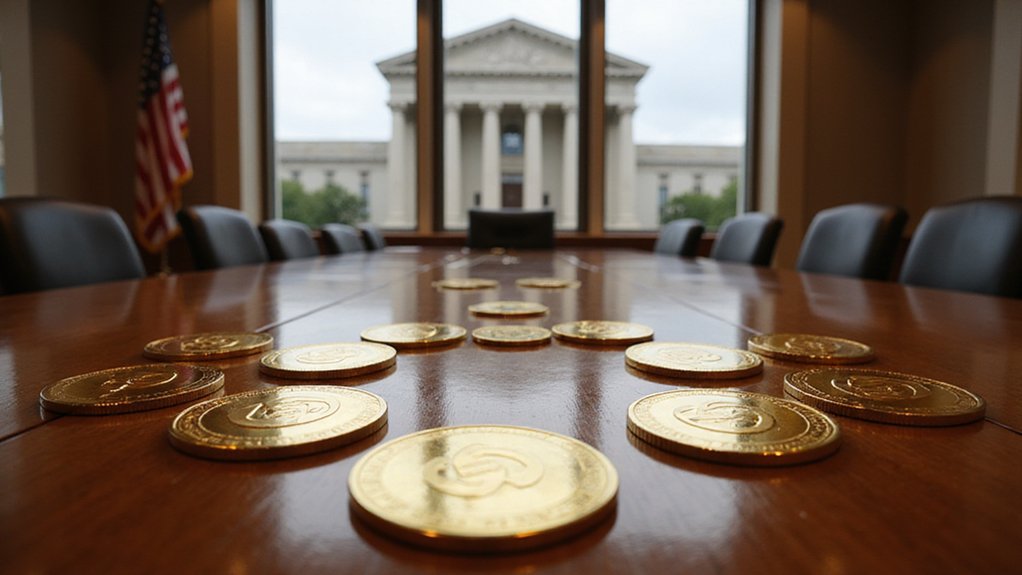The notion that Walmart and Amazon—titans of an industry built on razor-thin margins and ruthless cost optimization—would turn their attention to stablecoins might have seemed fanciful just a few years ago, yet here we are, witnessing these retail behemoths actively exploring the issuance of their own dollar-backed digital currencies. What drives this sudden fascination with blockchain-based payments isn’t some Silicon Valley techno-utopian fever dream, but rather the decidedly unsexy prospect of slashing billions in transaction fees that have long plagued their bottom lines.
The mathematics are compelling, if not entirely shocking to anyone who’s observed the credit card industry’s stranglehold on retail payments. Traditional payment processors extract their pound of flesh from every swipe, tap, and online checkout—fees that, when multiplied across Amazon’s $469 billion in annual revenue or Walmart’s $611 billion juggernaut, represent eye-watering sums that would make even seasoned CFOs wince. Stablecoins offer an elegant workaround: real-time settlement without the intermediary toll collectors. As the crypto landscape shifts from speculation to tangible utility, stablecoins are proving their worth in real-world applications.
The credit card industry’s toll booth model crumbles when stablecoins eliminate intermediary fees from trillion-dollar transaction volumes.
This isn’t merely about cost reduction, though the savings potential remains the primary catalyst. Enhanced payment efficiency through instantaneous settlement capabilities could revolutionize supply chain financing and vendor relationships, while reducing the complexities inherent in traditional banking rails. Other multinationals, including Expedia Group and major airlines, are eyeing similar initiatives—suggesting this trend extends far beyond retail’s particular pain points. Industry giants like Apple are reportedly exploring stablecoin integration for their payment platforms through strategic partnerships.
The regulatory landscape, once a formidable obstacle, has shifted dramatically in stablecoins’ favor. The U.S. Senate’s GENIUS Act of 2025 exemplifies the growing legislative embrace of digital currency frameworks, while Europe’s MiCa regulations provide international precedent. The legislation cleared a key Senate vote with an impressive 68-30 margin, signaling robust bipartisan support for comprehensive stablecoin regulation. Perhaps most tellingly, 85% of payment providers now view emerging regulations as facilitating rather than hindering adoption—a remarkable reversal from previous skepticism.
Infrastructure readiness poses minimal barriers, with 86% of providers claiming scalability preparedness. API integration and wallet compatibility have matured sufficiently to handle enterprise-level transaction volumes without compromising security or compliance standards.
Whether this represents genuine financial innovation or simply the inevitable evolution of payment rails remains to be seen, but the potential to redirect substantial transaction volumes away from traditional financial systems suggests we’re witnessing something more consequential than mere corporate cost-cutting.








